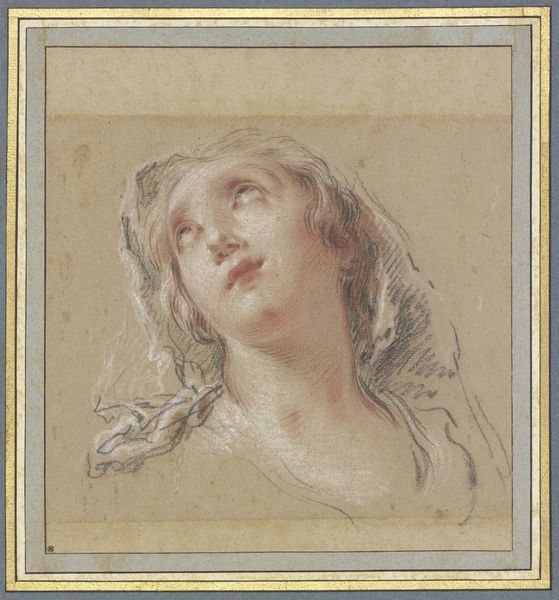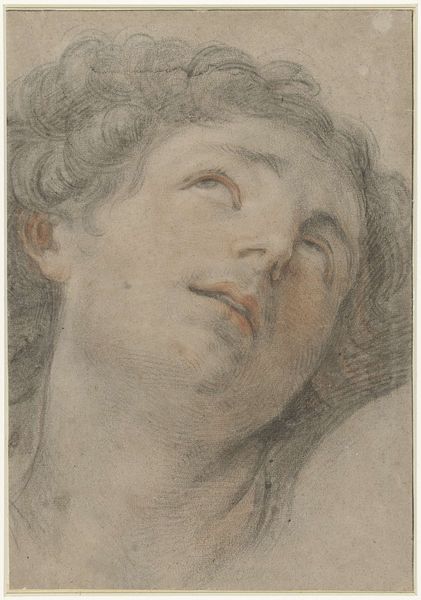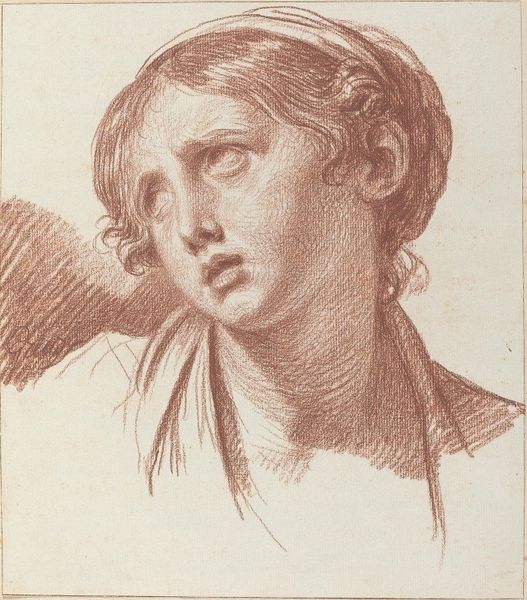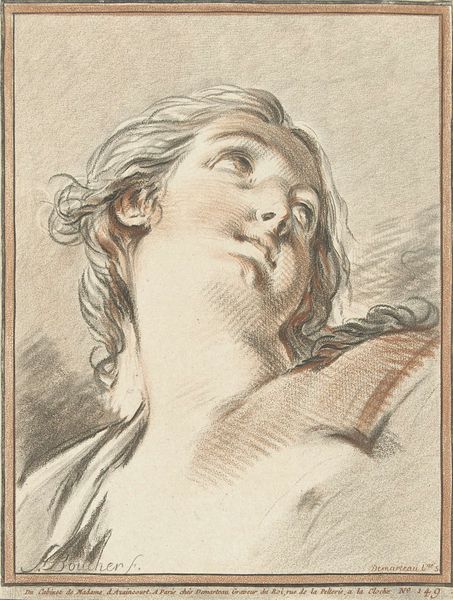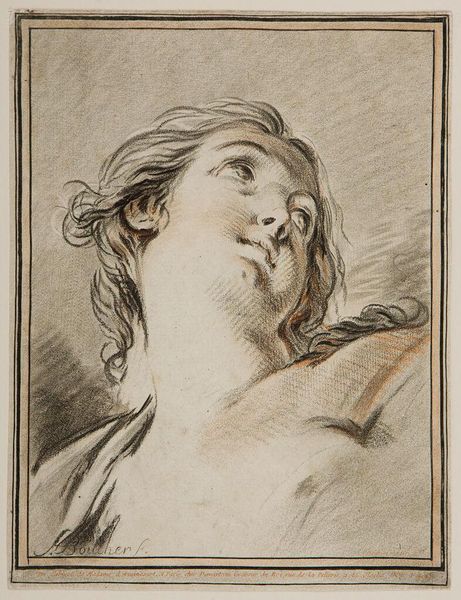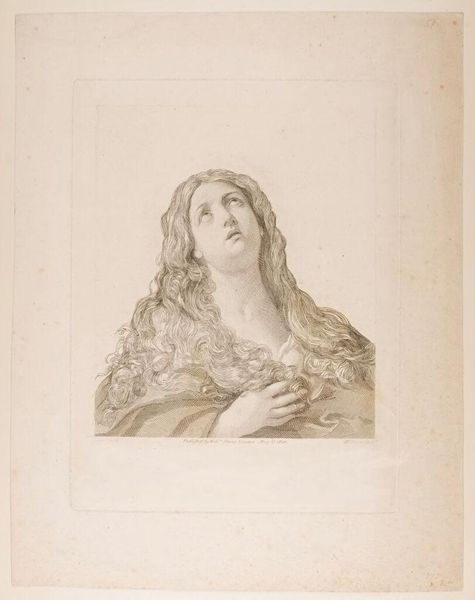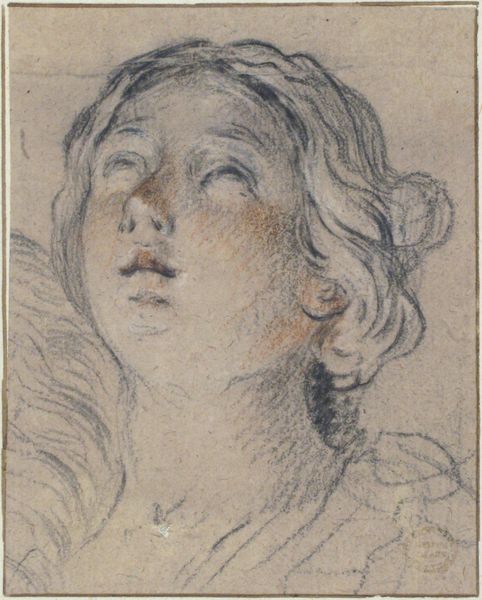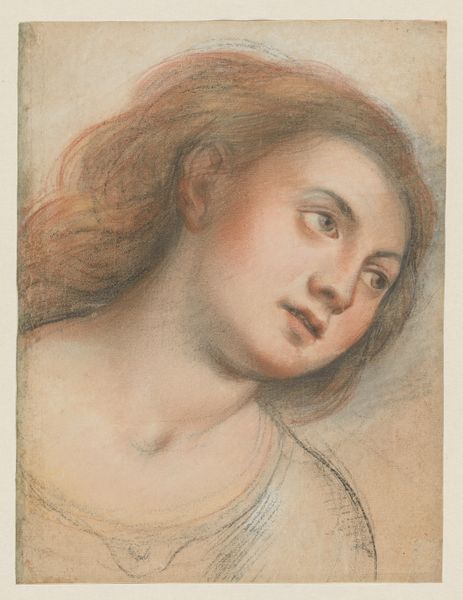
drawing, pen
#
portrait
#
drawing
#
allegory
#
pen
#
portrait drawing
#
rococo
Dimensions: height 655 mm, width 500 mm
Copyright: Rijks Museum: Open Domain
Editor: This drawing by Gilles Demarteau, "Andromache huilend", made between 1732 and 1776, portrays Andromache in profound grief. It’s really striking how raw and immediate the emotion feels despite being rendered in pen. What elements of the Rococo period might be at play here? Curator: Well, considering it's a drawing using pen, we should focus on the material conditions that shaped its creation and reception. Rococo, even in drawing, becomes a marketable commodity. This isn’t just a depiction of grief; it's the *production* of an image of grief, made accessible through reproductive technologies like engraving which were gaining traction at the time. How does this understanding change your perspective on its raw emotionality? Editor: That’s fascinating. So, the technique itself contributes to the dissemination of a specific type of sentiment? Is this 'mass production' potentially undermining the traditional concept of the artwork's unique aura? Curator: Precisely. The pen and the possibility of printmaking create multiple originals, and it challenges the very notion of authenticity that previous art movements cherished. It also brings in considerations of the labour involved: Who owned the means of producing such images, and who benefited from their circulation? Was Demarteau thinking of reaching new markets, by exploring ancient subjects through a contemporary lens? Editor: So, we are invited to consider the societal structure within which artworks like this emerged and operated? It makes me think differently about Andromache and what Demarteau wanted to convey. Curator: Exactly. Considering the process, material, and modes of consumption give us valuable context. And this contextual richness reveals the piece as not simply Rococo artwork depicting emotion, but as an artifact within an economy of images. Editor: Thanks! I’ve never considered how the method of production can so deeply influence my reading of art before. Curator: Likewise! The connection between materiality, labour, and meaning continues to reshape my views, as well.
Comments
No comments
Be the first to comment and join the conversation on the ultimate creative platform.
